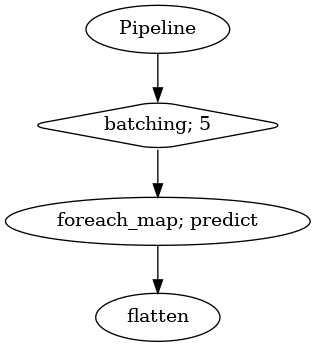Clean speech Detection
Contents
Clean speech Detection#
This tutorial is available as an IPython notebook at malaya-speech/example/is-clean.
This module is language independent, so it save to use on different languages.
This is an application of malaya-speech Pipeline, read more about malaya-speech Pipeline at malaya-speech/example/pipeline.
Dataset#
Trained on Musan Speech, VCTK, LibriSpeech and Malaya-Speech TTS dataset to detect cleaned speeches with no background noise / music.
[1]:
import os
os.environ['CUDA_VISIBLE_DEVICES'] = ''
[2]:
import malaya_speech
import numpy as np
from malaya_speech import Pipeline
`pyaudio` is not available, `malaya_speech.streaming.pyaudio` is not able to use.
[3]:
y, sr = malaya_speech.load('speech/vctk/p300_298_mic1.flac')
len(y) / sr
[3]:
5.2068125
[4]:
noise, _ = malaya_speech.load('speech/song/Lights-February-Air-sample.wav')
[5]:
import IPython.display as ipd
ipd.Audio(y, rate = sr)
[5]:
[6]:
ipd.Audio(noise, rate = sr)
[6]:
List available Nemo models#
[7]:
malaya_speech.is_clean.available_nemo()
[7]:
| original from | Size (MB) | |
|---|---|---|
| huseinzol05/nemo-is-clean-speakernet | https://catalog.ngc.nvidia.com/orgs/nvidia/tea... | 16.2 |
| huseinzol05/nemo-is-clean-titanet_large | https://catalog.ngc.nvidia.com/orgs/nvidia/tea... | 88.8 |
Load Nemo model#
def nemo(
model: str = 'huseinzol05/nemo-is-clean-speakernet',
**kwargs,
):
"""
Load Nvidia Nemo is clean model.
Trained on 100, 200, 300 ms frames.
Parameters
----------
model : str, optional (default='huseinzol05/nemo-is-clean-speakernet')
Check available models at `malaya_speech.is_clean.available_nemo()`.
Returns
-------
result : malaya_speech.torch_model.nemo.Classification class
"""
[8]:
model = malaya_speech.is_clean.nemo(model = 'huseinzol05/nemo-is-clean-titanet_large')
[9]:
_ = model.eval()
How to use Clean speech detection#
We finetuned nemo models on 100 ms, 200 ms, 300 ms frames, so, split a sample into multiple chunks with length at least 100 ms should be ok.
[10]:
frames = list(malaya_speech.utils.generator.frames(y, 100, sr, False))
[11]:
%%time
probs = [(frame, model.predict_proba([frame])[0, 1]) for frame in frames]
CPU times: user 37.9 s, sys: 504 ms, total: 38.4 s
Wall time: 4.72 s
[12]:
vad = malaya_speech.vad.deep_model(model = 'vggvox-v2')
frames = list(malaya_speech.utils.generator.frames(y, 30, sr))
p = Pipeline()
pipeline = (
p.batching(5)
.foreach_map(vad.predict)
.flatten()
)
p.visualize()
2023-02-21 21:07:03.019640: I tensorflow/core/platform/cpu_feature_guard.cc:142] This TensorFlow binary is optimized with oneAPI Deep Neural Network Library (oneDNN) to use the following CPU instructions in performance-critical operations: AVX2 FMA
To enable them in other operations, rebuild TensorFlow with the appropriate compiler flags.
2023-02-21 21:07:03.025132: E tensorflow/stream_executor/cuda/cuda_driver.cc:271] failed call to cuInit: CUDA_ERROR_NO_DEVICE: no CUDA-capable device is detected
2023-02-21 21:07:03.025155: I tensorflow/stream_executor/cuda/cuda_diagnostics.cc:169] retrieving CUDA diagnostic information for host: husein-MS-7D31
2023-02-21 21:07:03.025158: I tensorflow/stream_executor/cuda/cuda_diagnostics.cc:176] hostname: husein-MS-7D31
2023-02-21 21:07:03.025225: I tensorflow/stream_executor/cuda/cuda_diagnostics.cc:200] libcuda reported version is: 470.161.3
2023-02-21 21:07:03.025239: I tensorflow/stream_executor/cuda/cuda_diagnostics.cc:204] kernel reported version is: 470.161.3
2023-02-21 21:07:03.025242: I tensorflow/stream_executor/cuda/cuda_diagnostics.cc:310] kernel version seems to match DSO: 470.161.3
[12]:

[13]:
result = p.emit(frames)
result.keys()
/home/husein/.local/lib/python3.8/site-packages/librosa/core/spectrum.py:222: UserWarning: n_fft=512 is too small for input signal of length=480
warnings.warn(
/home/husein/.local/lib/python3.8/site-packages/librosa/core/spectrum.py:222: UserWarning: n_fft=512 is too small for input signal of length=269
warnings.warn(
[13]:
dict_keys(['batching', 'predict', 'flatten'])
[14]:
frames_vad = [(frame, result['flatten'][no]) for no, frame in enumerate(frames)]
grouped_vad = malaya_speech.utils.group.group_frames(frames_vad)
grouped_vad = malaya_speech.utils.group.group_frames_threshold(grouped_vad, threshold_to_stop = 0.3)
grouped_vad = malaya_speech.utils.group.group_frames(grouped_vad)
[15]:
import matplotlib.pyplot as plt
import seaborn as sns
sns.set()
[16]:
nrows = 2
fig, ax = plt.subplots(nrows = nrows, ncols = 1)
fig.set_figwidth(20)
fig.set_figheight(nrows * 3)
malaya_speech.extra.visualization.visualize_vad(y, grouped_vad, sr, ax = ax[0])
malaya_speech.extra.visualization.plot_classification(probs, 'clean speech',
yaxis = True, ax = ax[1])
fig.tight_layout()
plt.show()

how about noisy speech?#
[18]:
y = malaya_speech.augmentation.waveform.add_noise(
y, noise, factor=0.6)
[19]:
%%time
frames = list(malaya_speech.utils.generator.frames(y, 100, sr, False))
probs = [(frame, model.predict_proba([frame])[0, 1]) for frame in frames]
CPU times: user 20.6 s, sys: 315 ms, total: 20.9 s
Wall time: 2.43 s
[20]:
nrows = 2
fig, ax = plt.subplots(nrows = nrows, ncols = 1)
fig.set_figwidth(20)
fig.set_figheight(nrows * 3)
malaya_speech.extra.visualization.visualize_vad(y, grouped_vad, sr, ax = ax[0])
malaya_speech.extra.visualization.plot_classification(probs, 'clean speech',
yaxis = True, ax = ax[1])
fig.tight_layout()
plt.show()

